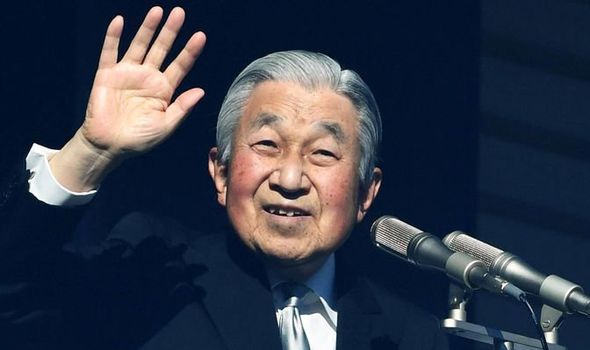Tokyo: Draped in ornate golden-brown robes and wearing a towering black hat, Japan’s Emperor Akihito kicked off Tuesday ceremonies for his abdication, the first in 200 years for the world’s oldest monarchy.
Akihito is handing over the Chrysanthemum Throne to his eldest son, 59-year-old Crown Prince Naruhito, in a series of solemn rituals that also usher in the new imperial era named ‘Reiwa’ – meaning beautiful harmony – that will last throughout the new monarch’s reign.
As crowds began to gather early Tuesday in drizzle outside the sumptuous Imperial Palace in central Tokyo, the emperor performed a ritual to ‘report’ his abdication to his ancestors and the Shinto gods at several ‘sanctuaries’.
But the main event will be at 5:00pm local time, when the 85-year-old Akihito will formally step down in a 10-minute ceremony in the ‘Matsu-no-Ma’ (Room of Pine), considered the Imperial Palace’s most elegant hall. The ritual will be conducted in the presence of the imperial regalia – an ancient sword and jewel – considered crucial evidence of an emperor’s legitimacy.
However, Akihito nominally remains emperor until the stroke of midnight and Naruhito ‘inherits’ the regalia at a second ceremony Wednesday at 10:30am. He will make his first official public remarks shortly afterwards.
Wednesday’s ceremony is expected to be attended by just one woman – the sole female member of Prime Minister Shinzo Abe’s cabinet. Female royals are prohibited from participating.
The ceremonies are not public but hardy bands of well-wishers congregated outside the palace Tuesday morning, despite near-constant rain. “I’d like to thank the emperor for his hard work,” said 76-year-old Hironari Uemara, visiting Tokyo from Okayama in western Japan.
President Donald Trump was among the first world leaders to send congratulations, offering ‘heartfelt appreciation’ to the outgoing imperial couple and stressing the ‘close relationship’ between the US and Japan.
The popular Akihito stunned Japan when he announced in 2016 his wish to give up the Chrysanthemum Throne, citing his age and health problems – he has been treated for prostate cancer and has also undergone heart surgery.
Akihito has sought to modernise Japan’s imperial family, which has a sensitive position given the role his father Hirohito played in the country’s militaristic past.
Like his father, Naruhito is seen as a modern royal and has previously issued mild criticism of the sometimes stifling lifestyle imposed on royals, particularly as his wife Masako has struggled to adapt to imperial life and has long battled stress-induced illness.
